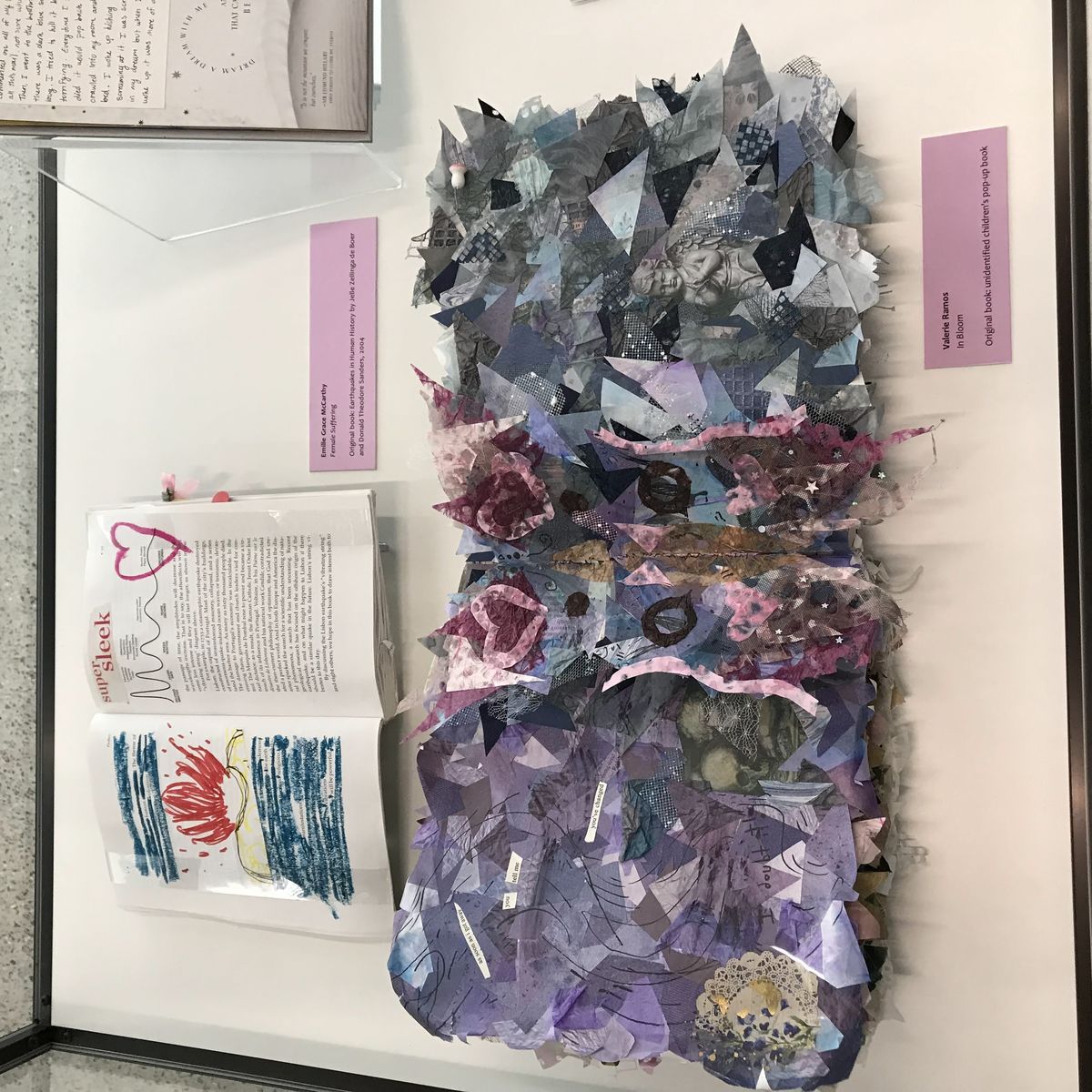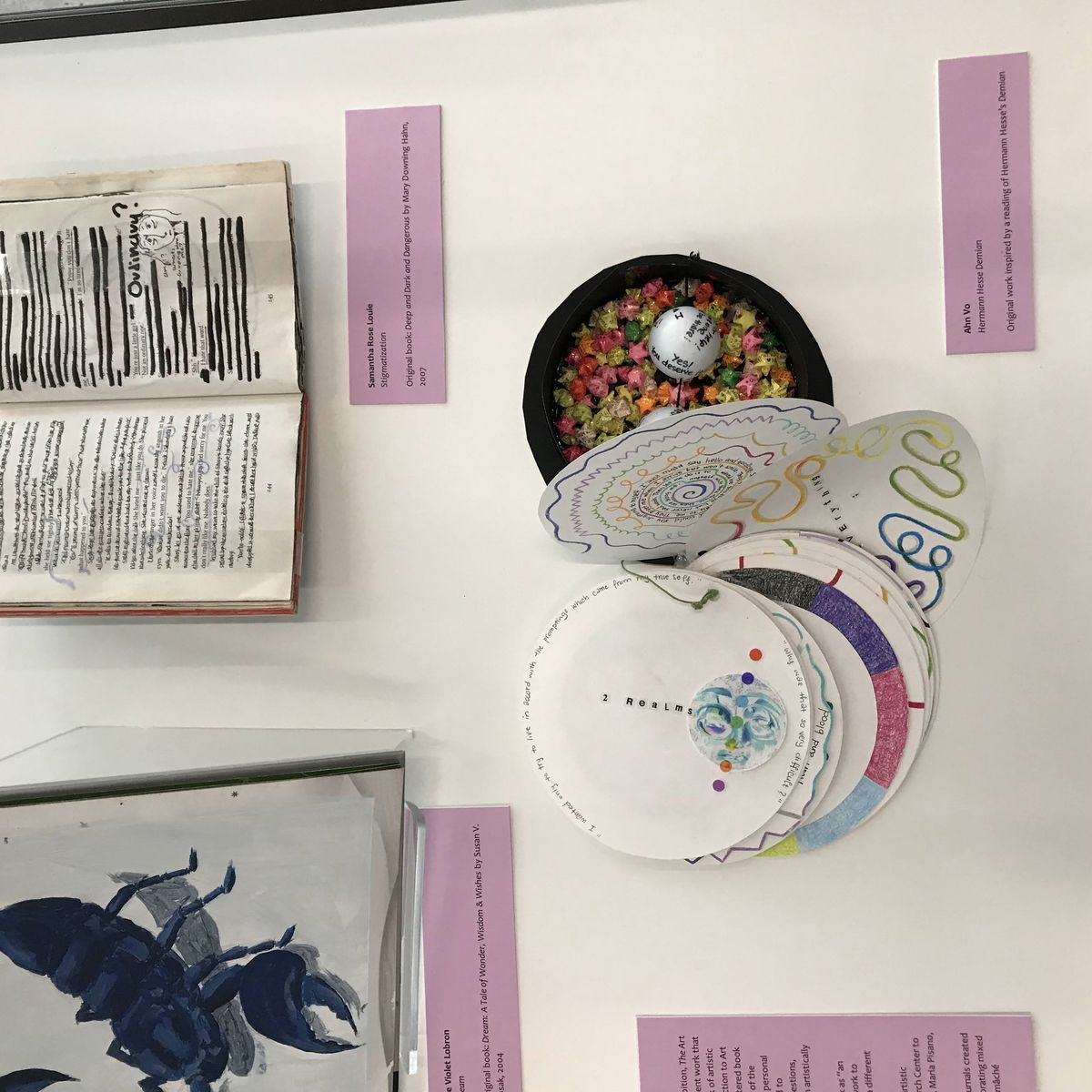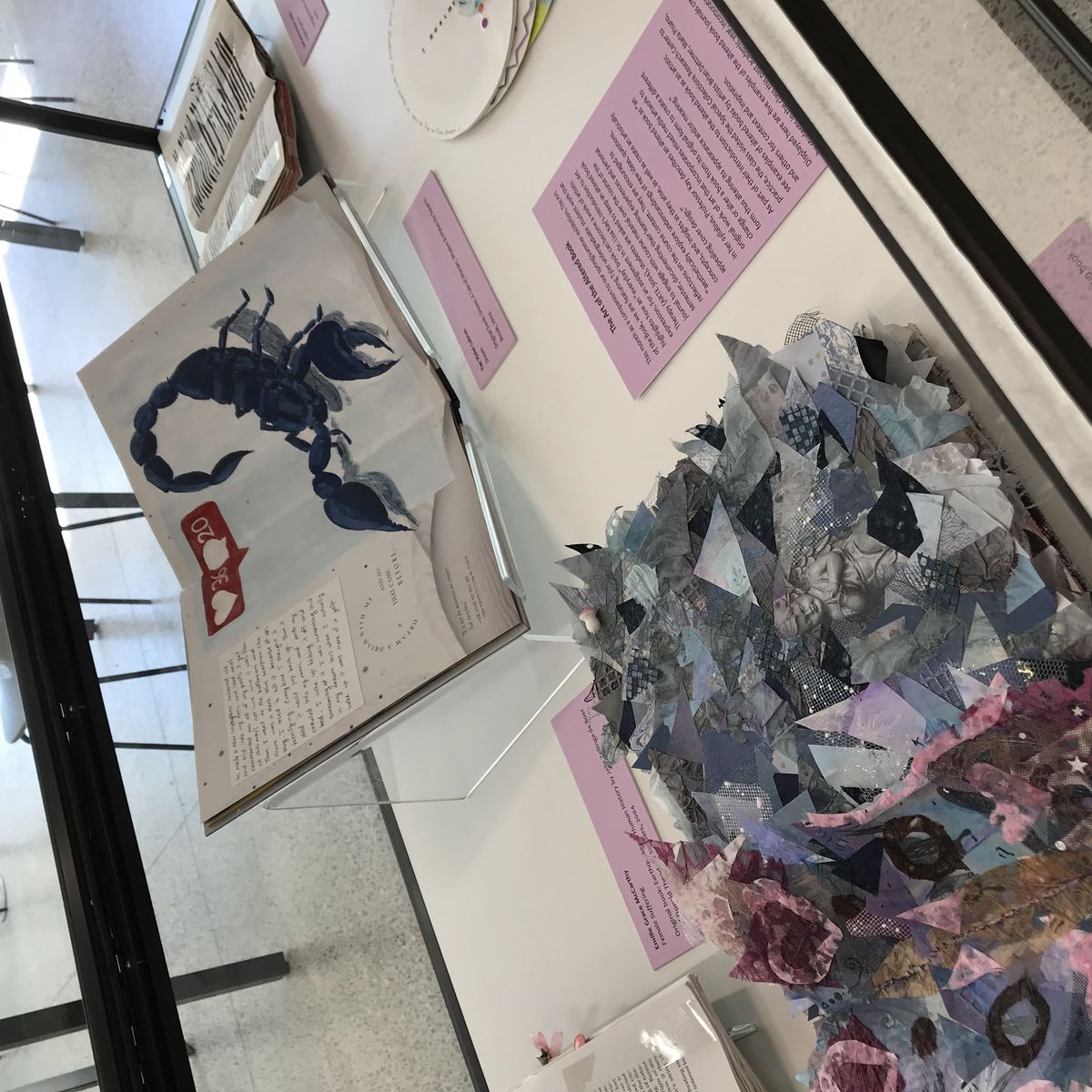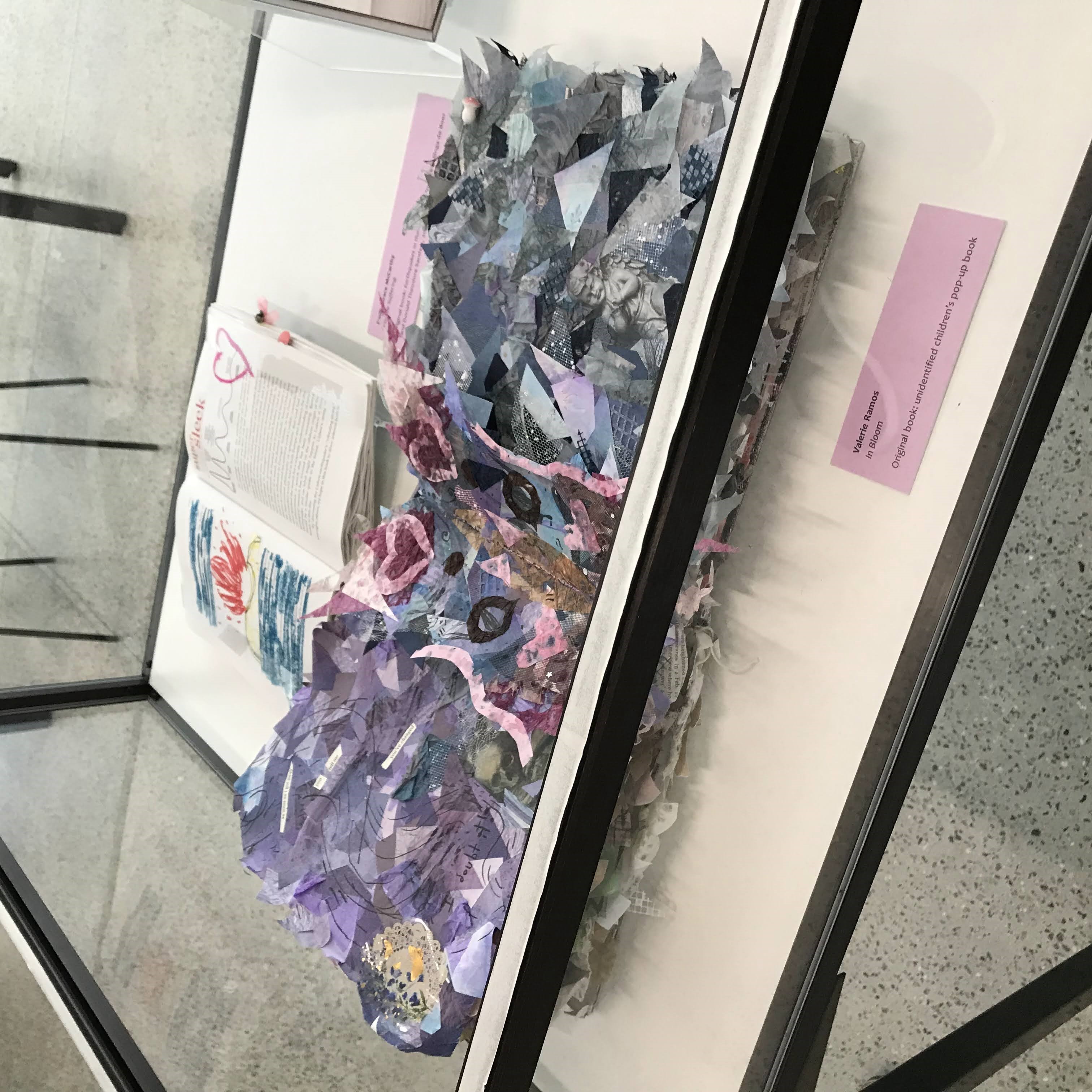Art Therapy major Valerie Ramos’s book In Bloom is an explosion of mixed media, tissue paper, newsprint, patterned craft paper, felted snippets, tinsel scalloped doilies, and stiffened netting.
The book’s assemblages of multicolored pages are so full that they sit up like wings when fully open, which seems apropos as the center of the book coyly resembles a swallowtail butterfly, with puffy wings of mauve and pink and purple and blue and silver.
Ramos’s book is part of a small exhibition in the Reading Room of the Charles Library’s Special Collections Research Center that features “altered books” by undergraduate students in Tyler Professor Lisa Kay’s “Introduction to Art Therapy” class.
An altered book is an original work of art that incorporates mixed media artwork to change or alter a book from its original form to create a different form and unique work of artistic expression, thus changing its appearance and/or meaning.
Students in the class were asked to keep an altered book journal to engage with the course materials throughout the spring 2024 semester, documenting their learning experiences and personal reflections on the course content.
“While we are not doing therapy in class, they are learning about how the practice might be used in art therapy context,” said Kay, adding that students discover the ways in which altered books can be an effective exercise in art therapy.
Through the assignment students develop as artists, engage with course materials and document their learning experiences using art-based methods, and explore new ideas, question, concepts and insights that arise during the semester, she said.
Kay, an award-winning scholar, art educator, artist/researcher and board-certified art therapist, has written in her 2020 book Therapeutic Approaches in Art Education (Davis Publications):
“The process of altering, and the final altered book, served as a metaphor for how we are shaped by our experiences and the choices we make... Some students may feel they have been abandoned and discarded, like the book. By reclaiming and repurposing the book, so, too, can they reclaim parts of themselves and find a new purpose. Like the book, we can be altered or transformed. The resulting knowledge contained within can change, bolster, and honor self-perceptions as students seek to understand and define their identities."
Kay said the students select books to work with from a variety of sources, depending on their concept and idea. “We have some books in the classroom. One student searched and ordered a pop-up children's book on Amazon. I've had students get books at thrift stores, garage sales. Some have altered a favorite book they read in high school,” she said.



The five works in the exhibition incorporate mixed media, blackout poetry, sculpture, painting, papier-mâché, and other techniques.
Ramos (BA ’25) used a children’s pop-up book as her starting point, while fellow art therapy major Ahn Vo (BA ’25) created a sculptural book of decorated paper circles and tiny plastic stars that was inspired by a reading of German-Swiss poet and author Hermann Hesse’s Demian, a story about growing up and finding your meaning in life.
In her altered book, Stigmatization, art therapy major Samantha Rose Louie (BA ’27) chose to scribble through and redact words, insert sketches and her own commentary on pages of the 2007 children’s mystery novel Deep, Dark and Dangerous. Altered books by Emilie Grace McCarthy, a film and theater major, and art therapy major Fae Violet Lobron (BA’ 25) are also on exhibit.
The students found context for the project by getting to view rare artists’ books housed in the Charles Library’s Special Collections Research Center; they had more than 30 examples to peruse. That’s how the library ended up featuring the work of five students in the class in a month-long, one-case pop-up exhibition.
“Dr. Kay's class visited the SCRC once during this semester to see some examples of artists' books for inspiration for their assignment,” said Curator and Rare Books Librarian Kimberly Tully. “SCRC staff rotate curation of the one exhibit case in our reading room on a monthly basis, and this month was mine and the timing worked out perfectly to feature Dr. Kay's students' work.”
“I was just a facilitator for the engagement with the SCRC artists' books, to help make the connection with existing works and their projects. I also think of myself as a "cheerleader" for the students and their projects, and that's why I'm happy to find ways to feature student work whenever I can,” she added.
The exhibition will be on view through June 30 in the Special Collections Research Center Reading Room in the Charles Library.
Images courtesy of the Special Collections Research Center, Charles Library

